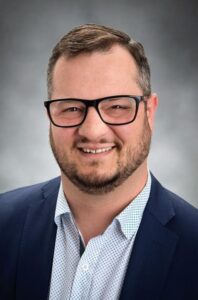[et_pb_section admin_label=”section”][et_pb_row admin_label=”row”][et_pb_column type=”1_2″][et_pb_image admin_label=”Where the Rubber Meets the Road: Students Experience Hands-on Learning with SWITCH Electric Vehicle – Image” src=”http://webistree-wp.com/cte/files/2016/09/Carlos-C-Arthur-L-R.-Bilberry_Hanna-Boys-School_CropA.jpg” alt=”Where the Rubber Meets the Road: Students Experience Hands-on Learning with SWITCH Electric Vehicle” title_text=”Where the Rubber Meets the Road: Students Experience Hands-on Learning with SWITCH Electric Vehicle” show_in_lightbox=”off” url_new_window=”off” use_overlay=”off” animation=”left” sticky=”off” align=”center” force_fullwidth=”off” always_center_on_mobile=”on” use_border_color=”off” border_color=”#ffffff” border_style=”solid”] [/et_pb_image][et_pb_text admin_label=”Where the Rubber Meets the Road: Students Experience Hands-on Learning with SWITCH Electric Vehicle -Text” background_layout=”light” text_orientation=”left” use_border_color=”off” border_color=”#ffffff” border_style=”solid”]
CTE Student Stories
Ron Billberry teaches the Conceptual Physics course at Archbishop Hanna High School, a residential rehabilitation program for at risk youth. Students come to the school from a variety of challenging life situations – from dealing with drug addiction and abuse to fleeing gang violence and a potential life in prison. Instructors at the school are charged with helping motivated youth graduate high school, prepare for college, and develop technical and soft skills that will help them change their lives for the better.
The CTE Foundation chose Hanna High School through a competitive grant-making process to receive one of four SWITCH Lab Kits in 2016. The Kit provides curriculum and components for building a street legal electric vehicle, thus giving students a real world application for their coursework in Science, Technology, Engineering and Mathematics (STEM). Students are also exposed to concepts in Electricity, Alternative Fuels, Manufacturing, Science, Automotive Technology, and Clean Energy Generation while working through Common Core requirements.
In alignment with CTE principles, Ron believes that every student wants to be a part of something that offers real life, hands on learning, and building the SWITCH electric vehicle represents a particularly exciting opportunity in this regard. In its inaugural year, students weren’t exactly sure what to expect of the new curriculum. Ron launched the course by taking his eight students on a tour of the SWITCH EV plant where they could see the cars up close and personal. They were thrilled to learn that the SWITCH cars were real street-worthy vehicles, and when the co-founder took each of them for a test drive, their collective energy and excitement for the class was sky high.
The students represented a full range of mechanical experience – some had worked on their own cars and some had never held a wrench. After the initial
[/et_pb_text][/et_pb_column][et_pb_column type=”1_2″][et_pb_text admin_label=”Text” background_layout=”light” text_orientation=”left” use_border_color=”off” border_color=”#ffffff” border_style=”solid”]
excitement wore off, many of them were pessimistic about their ability to actually build the vehicle from the ground up. “None of us knew what we were doing,” said Carlos C., a student in the class.
“When we first got the car, everything was scrambled everywhere, and no one knew what piece was what,” said Arthur L., another student. “We talked it over and decided we needed to first identify the pieces and visualize them working together, and that helped the project come together and made it easier to assemble it.”
The course wasn’t easy, and the first time they turned the key the car wouldn’t start. The students went through a troubleshooting process – an important step in teaching them how to learn from failure – and eventually the car did start. Teamwork is another important skill practiced in the class. “Organization and good communication were really important to having good teamwork,” said Carlos. His classmate Arthur added, “I wasn’t interested in electrical work at first, but there was a kid who was and we worked together in a way where I helped him with the mechanical work and he helped me with the electrical; it was good to work together.”
Ron also asked his students to think about their environmental impacts. “We had homework assignments as we built the car, looking at the differences between an electric car and a normal gasoline car to see which was better for the environment,” said Carlos, “Many argued that an electric vehicle is bad because of all the chemicals it takes to make a battery, but in the end it would not pollute at all. We compared that with having a car that runs on gas and pollutes the environment every time. I think that was really helpful to learn.”
As a testament to the kids’ enthusiasm, Ron had to practically chase the boys out of class at the end of each period, which happened to be right before lunch. For the first time ever, rather than bolting for the door before the bell, students would stay up to 10 minutes into the lunch break – they were so engaged, they didn’t want to stop.
During a celebratory ride with one of his students at the end of the school year, Ron remembers looking over to see his satisfied, happy smile. When he asked what he was smiling about, the student responded, “I can’t believe I built this car.”
[/et_pb_text][/et_pb_column][/et_pb_row][et_pb_row admin_label=”Row”][et_pb_column type=”4_4″][et_pb_divider admin_label=”Divider” color=”#ee9560″ show_divider=”on” divider_style=”solid” divider_position=”top” hide_on_mobile=”on” /][/et_pb_column][/et_pb_row][/et_pb_section]





